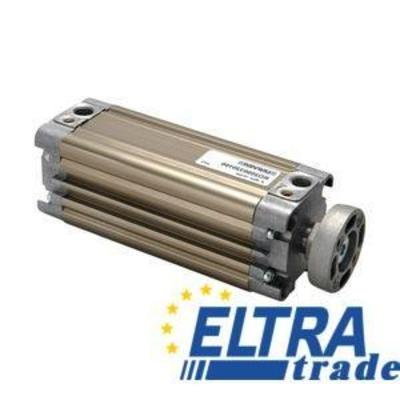Univer Pneumatic Octagonal Cylinder Univer RN
ISO 21287 Compact Cylinders octagonal tube. NON-ROTATING. Stainless steel male Long piston.
ISO 21287 Compact Cylinders octagonal tube. NON-ROTATING. Chromium-plated steel male Long piston rod.
Compact cylinder with octogonal tube. Chromium-plated steel piston rod, female, with long piston. ISO 21287. Non-Rotating.
Compact cylinder with octogonal tube. Stainless steel piston rod, male. ISO 21287. Non-Rotating.
Compact cylinder with octogonal tube. Stainless steel piston rod, male. ISO 21287. Non-Rotating.
Compact cylinder with octogonal tube. Stainless steel piston rod, male. ISO 21287. Non-Rotating.
Compact cylinder with octogonal tube. Stainless steel through piston rod, male. ISO 21287. Non-Rotating.
Compact cylinder with octogonal tube. Stainless steel piston rod (male) with long piston. ISO 21287. Non-Rotating.
Compact cylinder with octogonal tube. Chromium-plated steel piston rod, male. ISO 21287. Non-Rotating.
Compact cylinder with octogonal tube. Chromium-plated through steel piston rod, male. ISO 21287. Non-Rotating.
Compact cylinder with octogonal tube. Chromium-plated steel piston rod, male, with long piston. ISO 21287. Non-Rotating.
The pneumatic cylinder is one of the elements of the pneumatic system. It is designed to convert the energy of compressed air into a mechanical linear movement for the purpose of lifting or shearing with a force proportional to the diameter of the working cylinder and the pressure of the supplied compressed air. We can say that pneumatic cylinders are the main element of all pneumatic automation devices.
Today we take a closer look at Univer's octagonal cylinders RN.
What are Univer Octagonal Cylinders?
Univer octagonal cylinders RN are actuators of pneumatic systems and are designed to convert compressed air energy into mechanical linear movement. Pneumatic cylinders are devices for linear movement of the working body of machine tools and other mechanisms. Unlike rotary actuators, which have a rather complex design, pneumatic cylinders consist of a hollow sleeve, inside which a rod moves with the help of compressed air, creating a pulling and pushing effect on the mechanisms.
Dampers are used to reduce shock loading at the end of the stroke. With a small impact energy, this role is played by rubber rings. In large cylinders, a system is used to cut off part of the air, followed by a slow expiration through the throttle.
What Does an Octagonal Cylinder Do
Pneumatic cylinders are used in all industries where translational movement is required. Mass application, pneumatic cylinders, are found in press production, filling and packaging lines for products, as part of vehicles, during loading and unloading operations, and in elevators and conveyor systems. Thanks to the use of compressed air, rather than expensive oil, as in hydraulic cylinders, pneumatic cylinders are becoming more widespread in many areas of industry and the national economy, as cheap mechanisms that do not require expensive maintenance and scarce spare parts.
Technical Data About Octagonal Cylinders from Univer
All components of pneumatic cylinders - pistons, rods, flanges, covers - are made of high-strength steel and are subjected to special processing. Particular attention in the manufacture of drives is paid to the quality of the assembly. A guarantee of the quality of materials in the manufacture of pneumatic cylinders is a guarantee of safety during their operation.
The design of octagonal cylinders is as follows: in the sleeve, which serves as the cylinder body, there is a piston fixed on the rod so that the piston can move freely in the sleeve. On both sides, the sleeve is closed with caps. Thus, the piston divides the inner chamber of the pneumatic cylinder into two - rod and piston. When the working fluid is supplied to the piston cavity, the pneumatic cylinder moves forward, and when it is supplied to the rod cavity, it reverses.
And now consider the technical characteristics of Univer octagonal cylinders RN.
You can explore the full product catalog on our website, we are one of the official Univer octagonal distributors.
